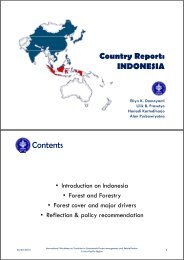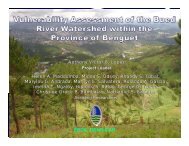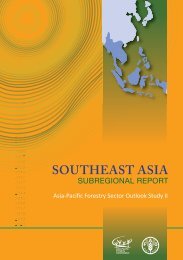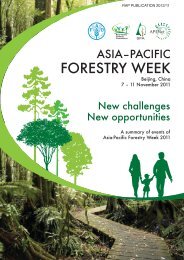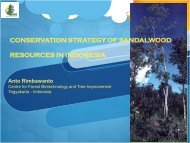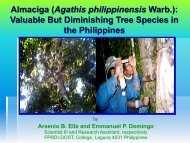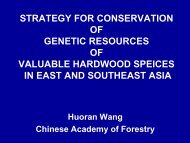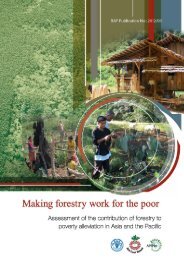Community guidelines for accessing forestry voluntary carbon ... - FAO
Community guidelines for accessing forestry voluntary carbon ... - FAO
Community guidelines for accessing forestry voluntary carbon ... - FAO
Create successful ePaper yourself
Turn your PDF publications into a flip-book with our unique Google optimized e-Paper software.
<strong>Community</strong> <strong>guidelines</strong> <strong>for</strong> <strong>accessing</strong> <strong>for</strong>estry <strong>voluntary</strong> <strong>carbon</strong> markets<br />
document (PDD);<br />
5. Validation of project design, leading to the registration of the<br />
project;<br />
6. Project implementation and monitoring;<br />
7. Verification of <strong>carbon</strong> credits; and<br />
8. Issuance and sale of <strong>carbon</strong> credits, as verified <strong>carbon</strong> units<br />
(VCU).<br />
The duration of the whole cycle is highly variable and depends to a<br />
large degree on the complexity of the project and the availability of<br />
human and financial resources. After registration of the project as an<br />
approved project with a <strong>for</strong>estry VCM standard, if all goes well, the<br />
first claim <strong>for</strong> <strong>carbon</strong> credits can be made within five years, and usually<br />
sooner than this. Monitoring of the project’s impact on <strong>carbon</strong> stocks<br />
and emission reductions is often done at least one year prior to the<br />
external verification. Verifications and <strong>carbon</strong> claims may be made as<br />
often as once a year, but more often they are less frequent than this; the<br />
income generated by the sale of VCUs must be worth the expenditure<br />
of conducting a pre-verification monitoring exercise and going through<br />
a full verification audit.<br />
At the beginning of the project cycle, the project developer’s main focus<br />
should be the development of initial documents that will enable them<br />
to access the market and attract investors. These documents include<br />
the Project Idea Note (PIN), a methodology, a project description<br />
(PD) or project design document (PDD) – and maybe an emission<br />
reduction purchase agreement (ERPA). Selection of an existing project<br />
methodology, or the development of a new one, is crucial to meeting<br />
project objectives in the most efficient and cost-effective way. Then<br />
it must be ensured that the method is applied correctly. Each of these<br />
steps is described below.<br />
102




